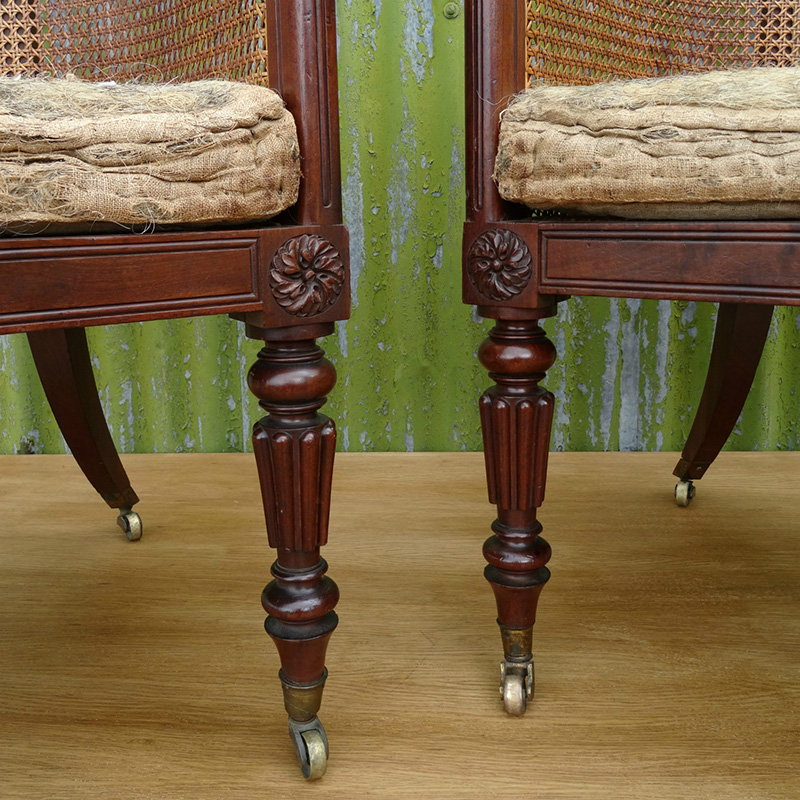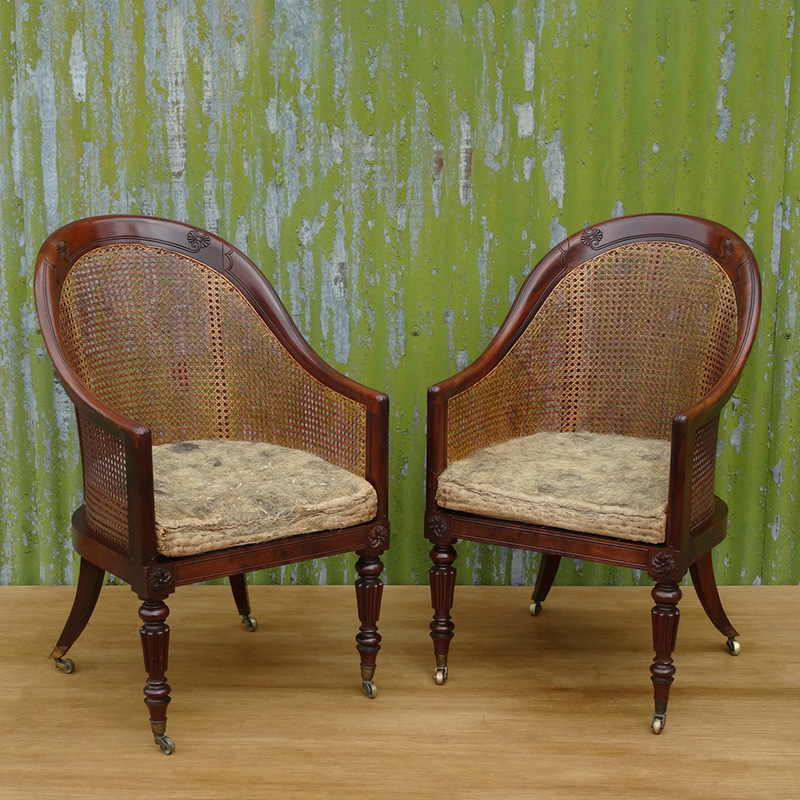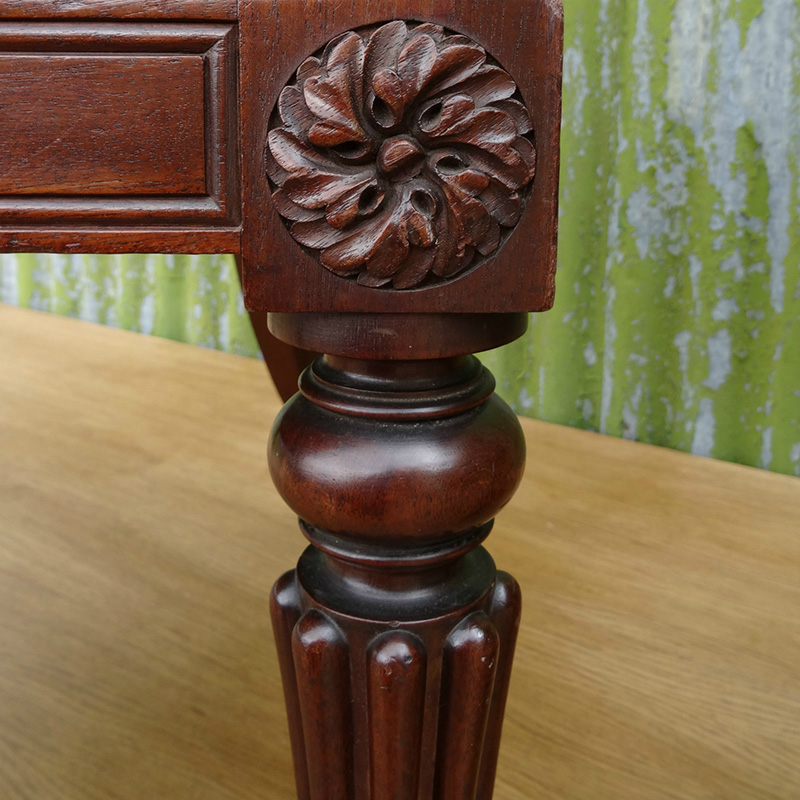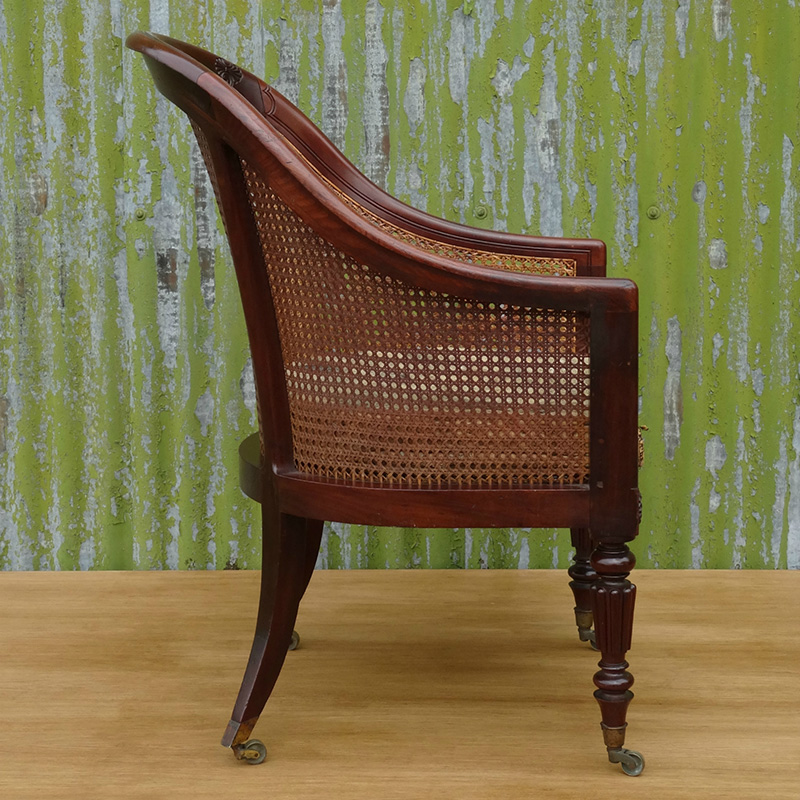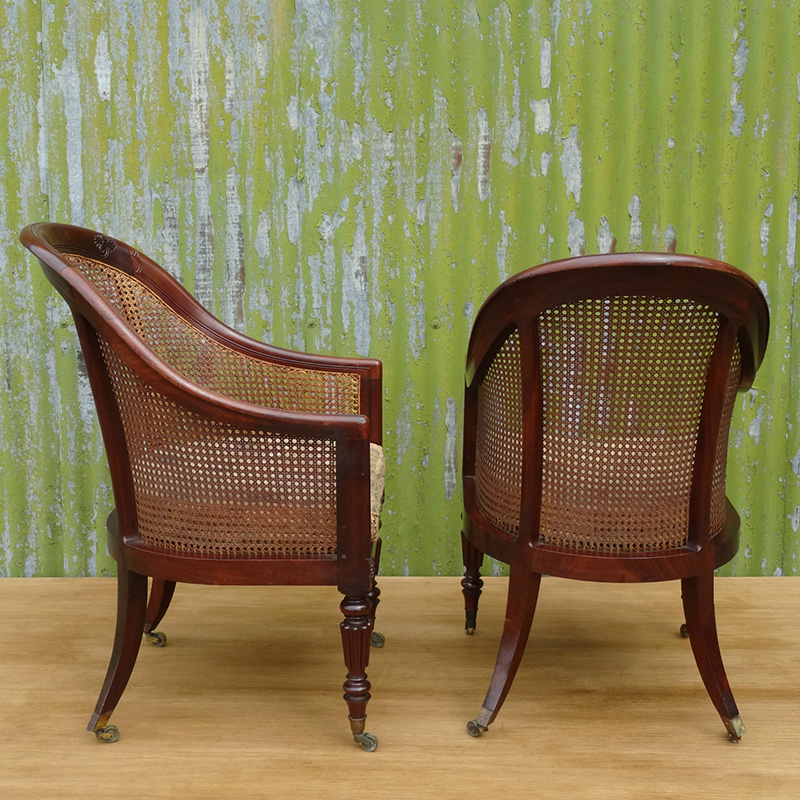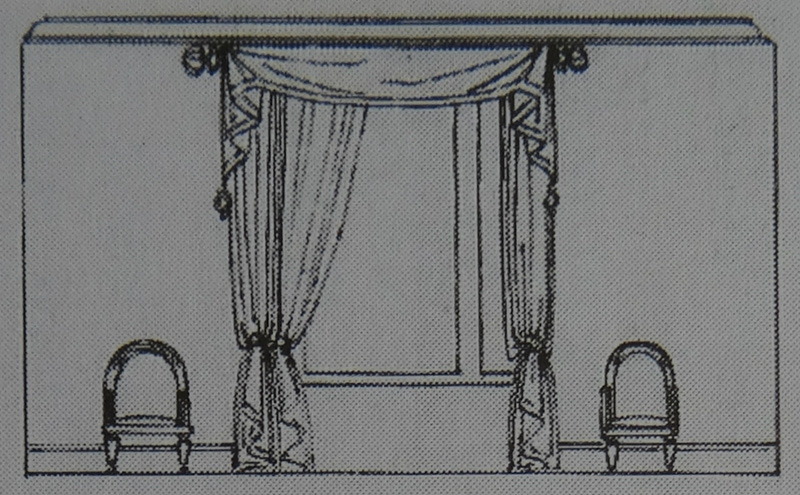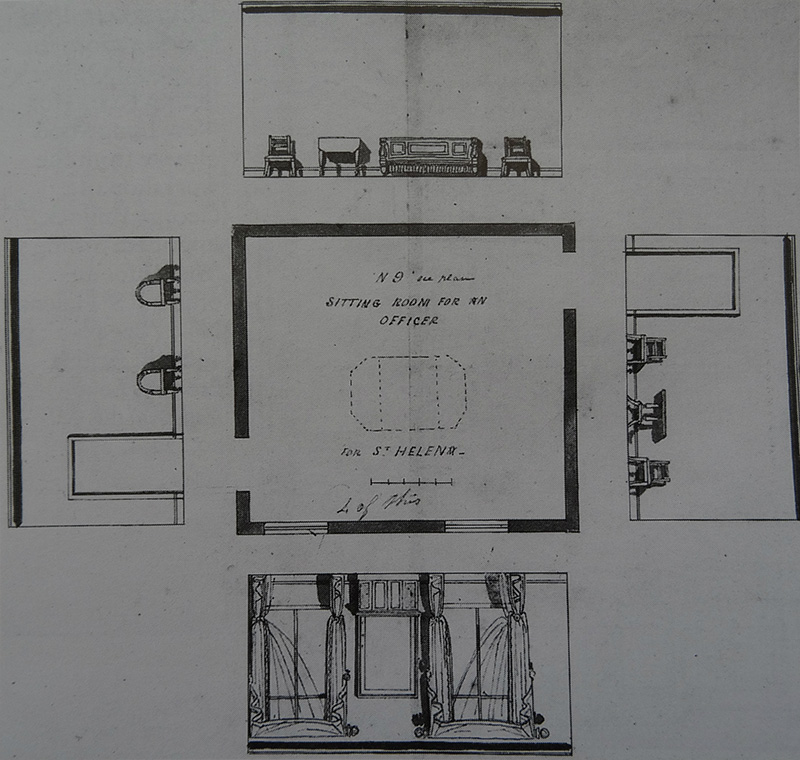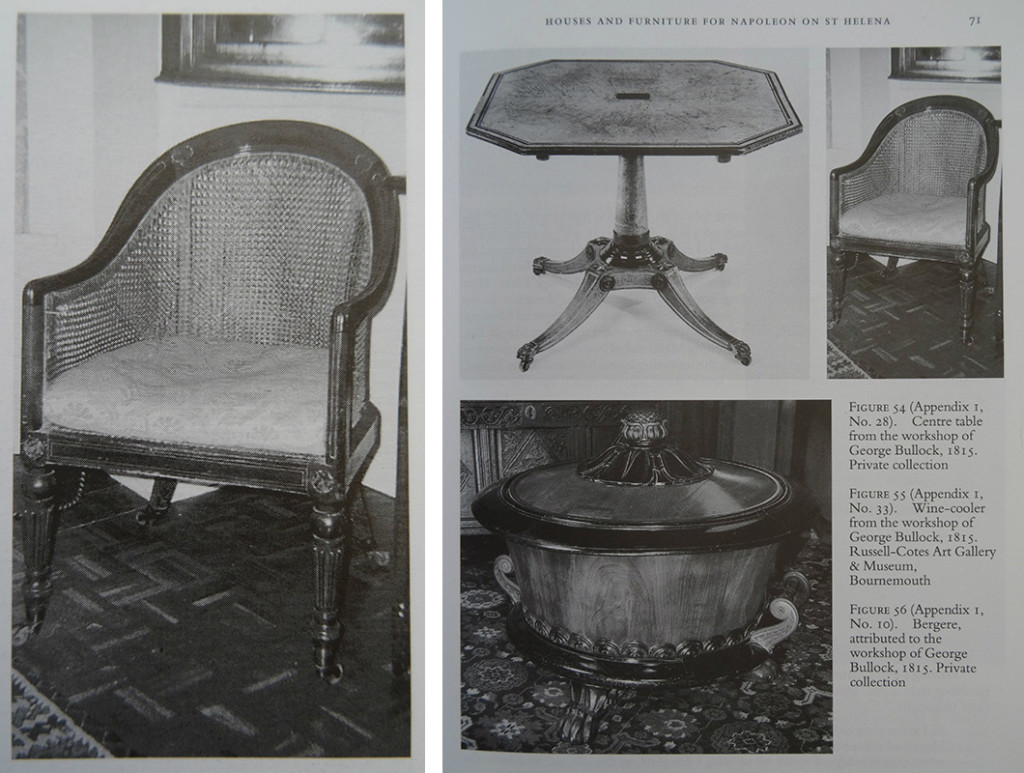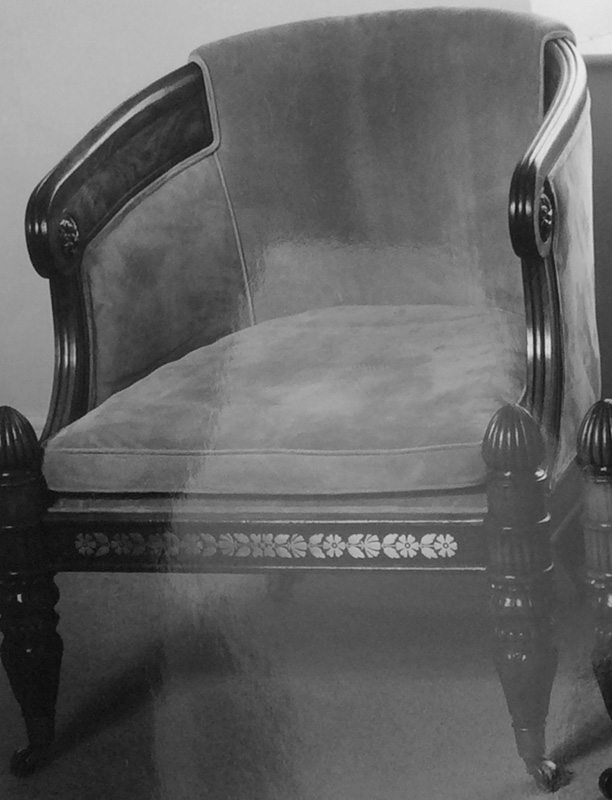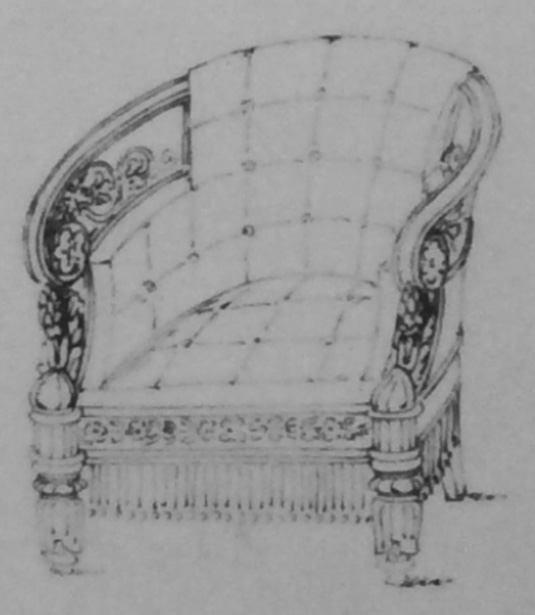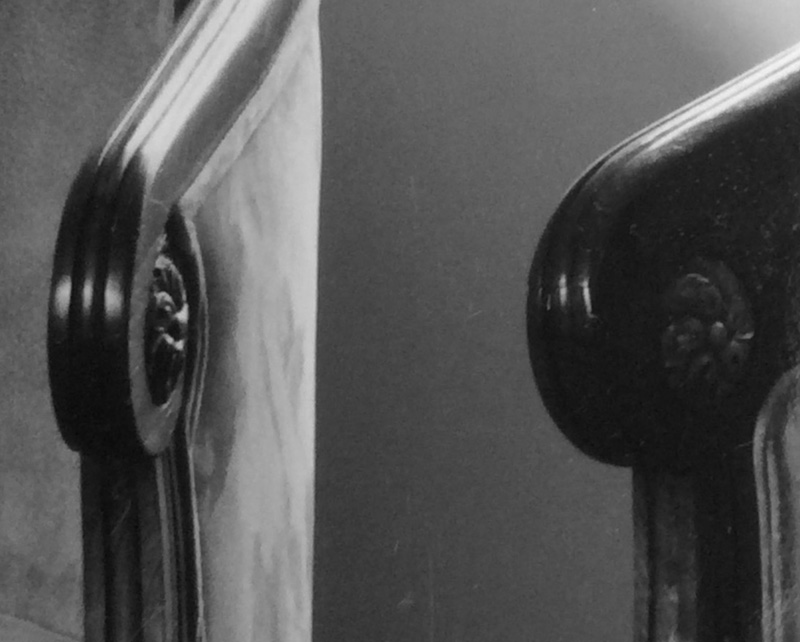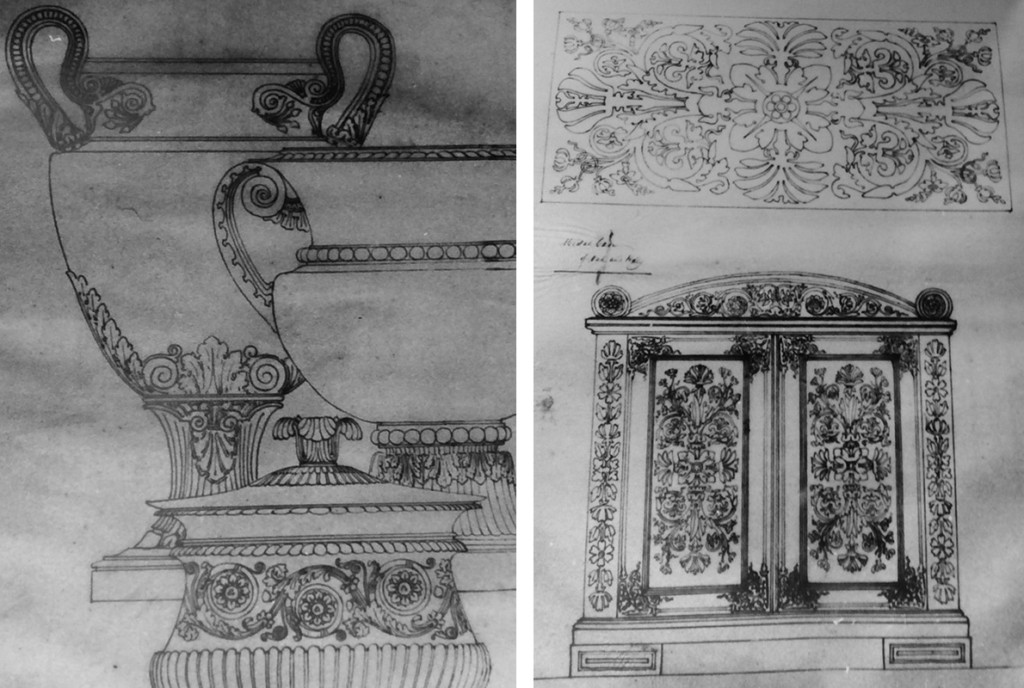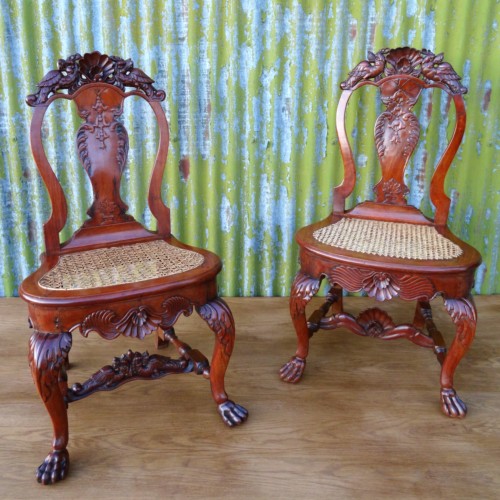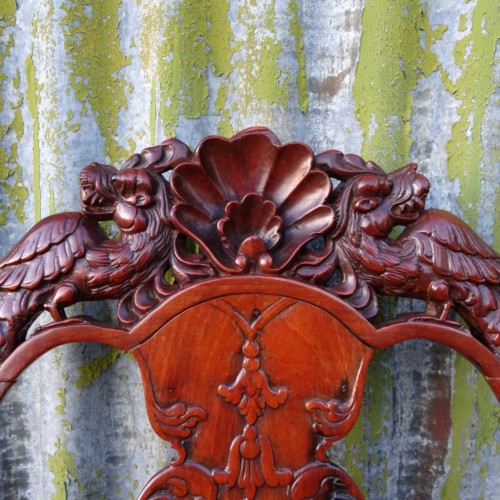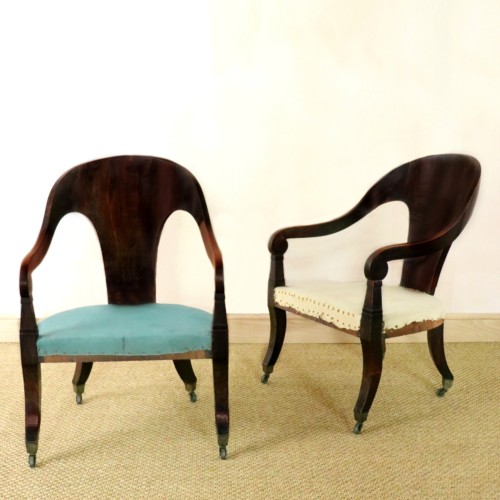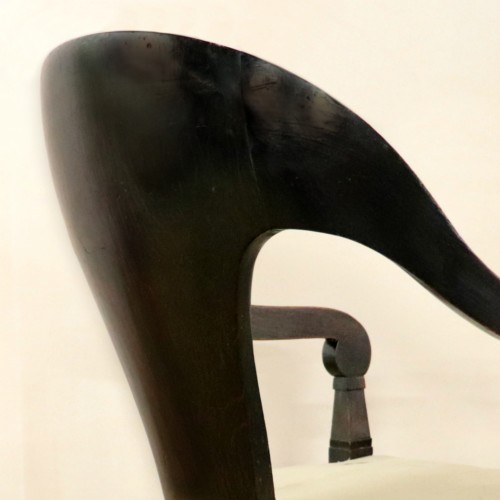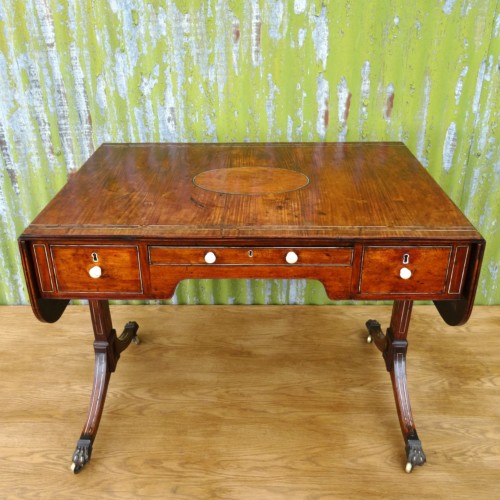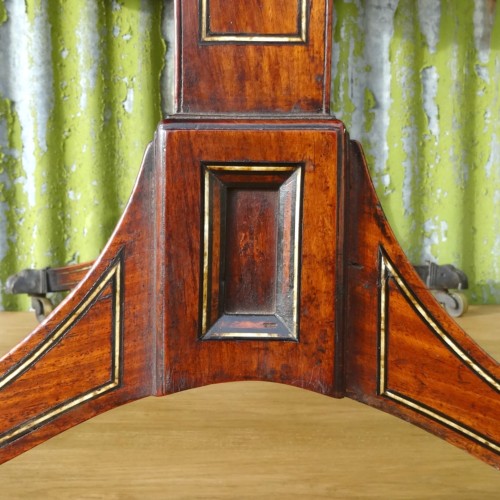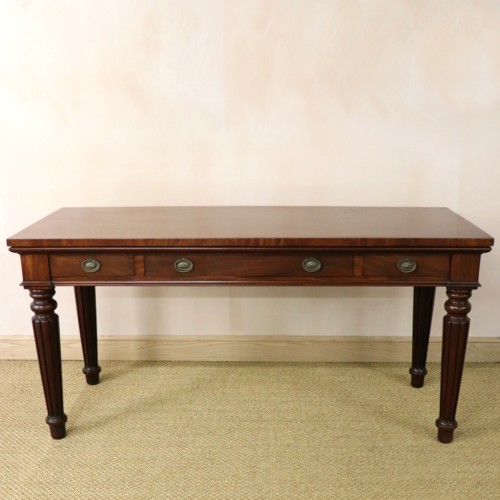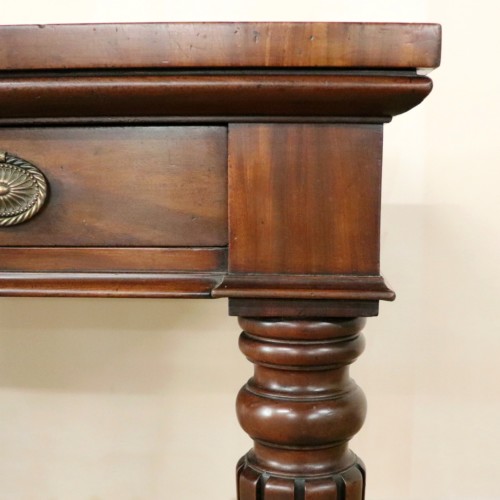Dimensions: 96cm high, 56cm wide, 67cm deep, the seats 50cm wide and 51cm deep
Provenance: Probably New Longwood House, St. Helena, the exile home of Napoleon; By repute, presented to a Senior British army officer in the 20th century; Thence by descent.
This pair of chairs appear to be one of four pairs supplied by George Bullock for New Longwood House, St. Helena as part of an extraordinarily lavish commission of Furniture and Furnishings by the British Government for Napoleon following his defeat at Waterloo. They are probably the chairs referred to in ‘George Bullock’s Account for Furniture Supplied to St. Helena, 1816’ as ‘To 2 Arm Chairs & Cushions…£16 16s’, two chairs for each of the four Officers’ sitting rooms (Figures 1 & 2 below).
After Napoleon’s death, most of the contents of New Longwood House were offered for sale by auction over ten days between April 1st and August 12th 1822.

